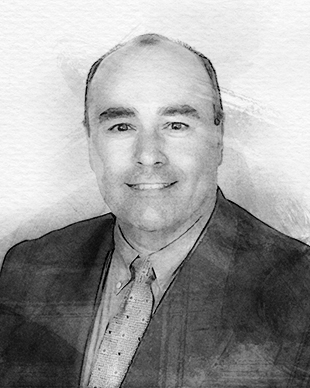IN PLAY: On a Mission for the Disabled
Mike Santay, the 2021 Lester H. McKeever Jr. Advancing Diversity Award recipient, shares the driving force behind his passion for disability access in the accounting profession.
By Hilary Collins | Fall 2021
 Michael Santay has enjoyed a long and rewarding career in the accounting profession, and he’s working hard to make sure that disabled people can do the same. A member of the Illinois CPA Society since 2002, this year he was honored with the Lester H. McKeever Jr. Advancing Diversity Award in the Outstanding Leader category in recognition of his tireless efforts to make the accounting profession more inclusive. And as Santay moves into retirement, stepping back from his role as a national partner in the auditing standards group at Grant Thornton LLP where he’s worked since 2003, he looks forward to committing more time toward championing the rights of disabled professionals.
Michael Santay has enjoyed a long and rewarding career in the accounting profession, and he’s working hard to make sure that disabled people can do the same. A member of the Illinois CPA Society since 2002, this year he was honored with the Lester H. McKeever Jr. Advancing Diversity Award in the Outstanding Leader category in recognition of his tireless efforts to make the accounting profession more inclusive. And as Santay moves into retirement, stepping back from his role as a national partner in the auditing standards group at Grant Thornton LLP where he’s worked since 2003, he looks forward to committing more time toward championing the rights of disabled professionals.
“The disability group is a unique group because it’s a class any of us can join at any time,” Santay says. “I have two nephews who were born with disabilities who are both accountants: One is in a wheelchair. They chose accounting because they viewed the profession as an avenue for them to find a meaningful career where they wouldn’t be held back by their disabilities.”
Determined to make sure his nephews and others have the opportunities to realize those career goals, Santay is a passionate ally for disabled people, particularly at Grant Thornton, in the accounting profession, and in Chicago’s business world. He has served on the finance committee for Access Living of Chicago and as an advisory board member for Disability:IN Chicagoland, both non-profit organizations focused on advancing disability accessibility, inclusion, and employment. Santay is also the founding member and executive sponsor of Grant Thornton’s Diversabilities Business Resource Group.
Through these channels, Santay has seen major changes within Grant Thornton and in his community. But he says the most important change isn’t a wheelchair ramp or specialist software, but a stigma-free environment allowing each employee to do their job.
“One of the rewarding experiences we had at Grant Thornton was when an employee with an invisible disability was brave enough to speak to our disabilities resource group,” Santay recounts. “We went to their manager and ended up getting them the accommodations they needed. Creating an environment where people don’t feel they have to hide their disabilities is an important yet challenging goal.”
In fact, it’s estimated that invisible disabilities account for most disabilities but are often under-reported because of feared backlash or stigmatization. Santay suspects that if people were comfortable self-reporting invisible disabilities, employers would be surprised to see that the numbers of disabled employees are probably much higher than the typical 1.5 percent average.
“I think having people share their stories is so important,” Santay says. “We have an internal program where some people in our group who have invisible disabilities share their stories and affirm that our culture is going to actually support disabled people and not just talk about supporting them. That’s a tough one because people have to be vulnerable to talk about their disabilities.”
Ultimately, Santay believes we can achieve a world where disabled people aren’t seen as outliers and their needs are simply taken care of: “My goal is that disability access becomes something we don’t even need to think about and we don’t even need advocacy groups anymore because the necessary infrastructure and attitudes have become so integrated into the world.”